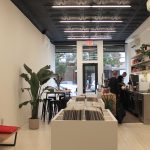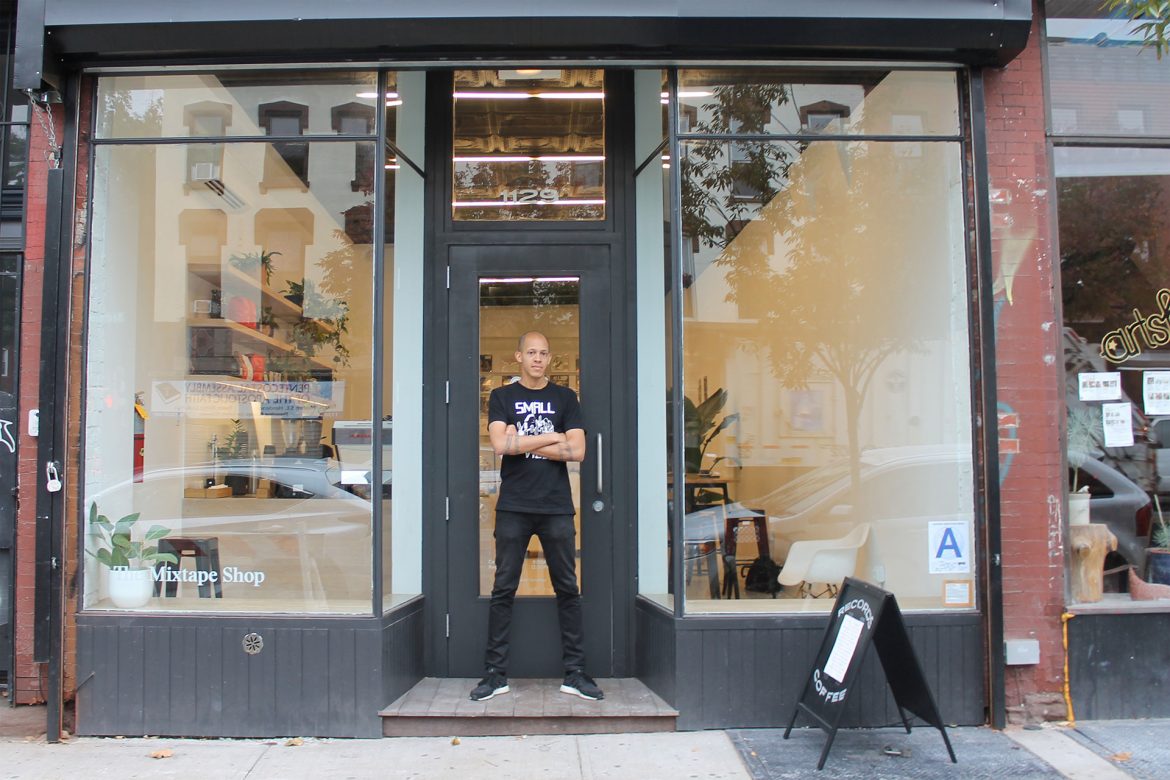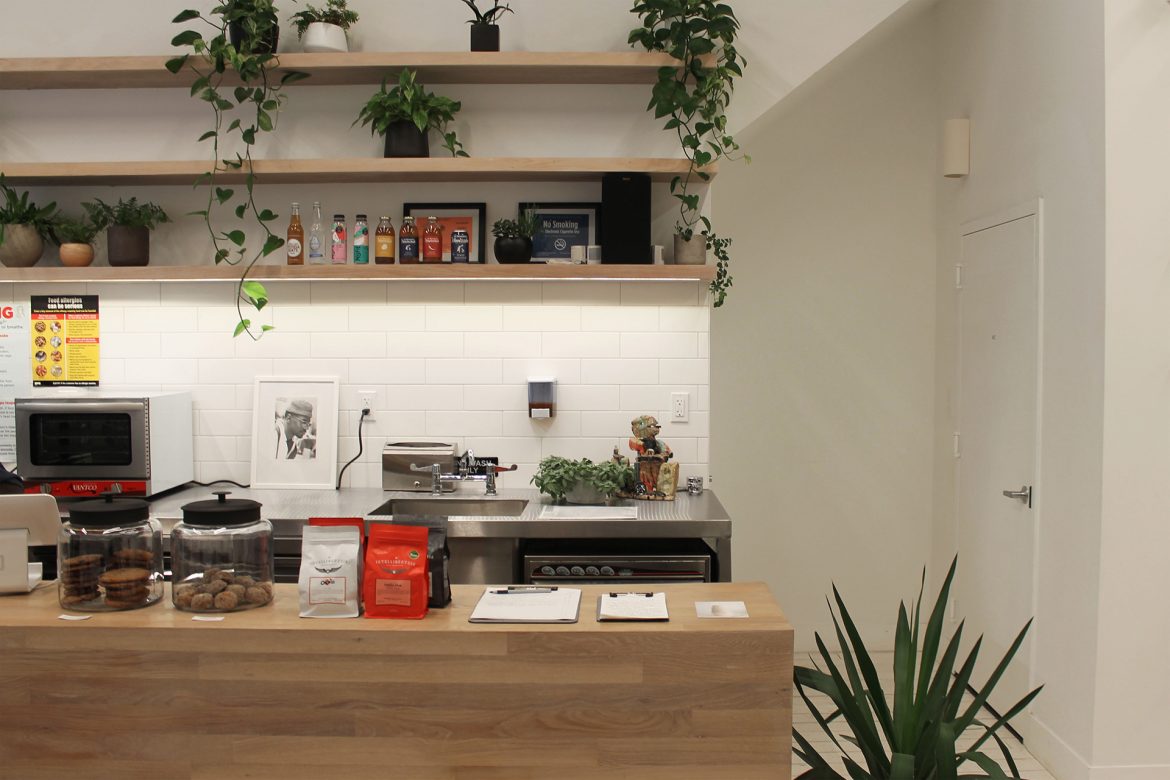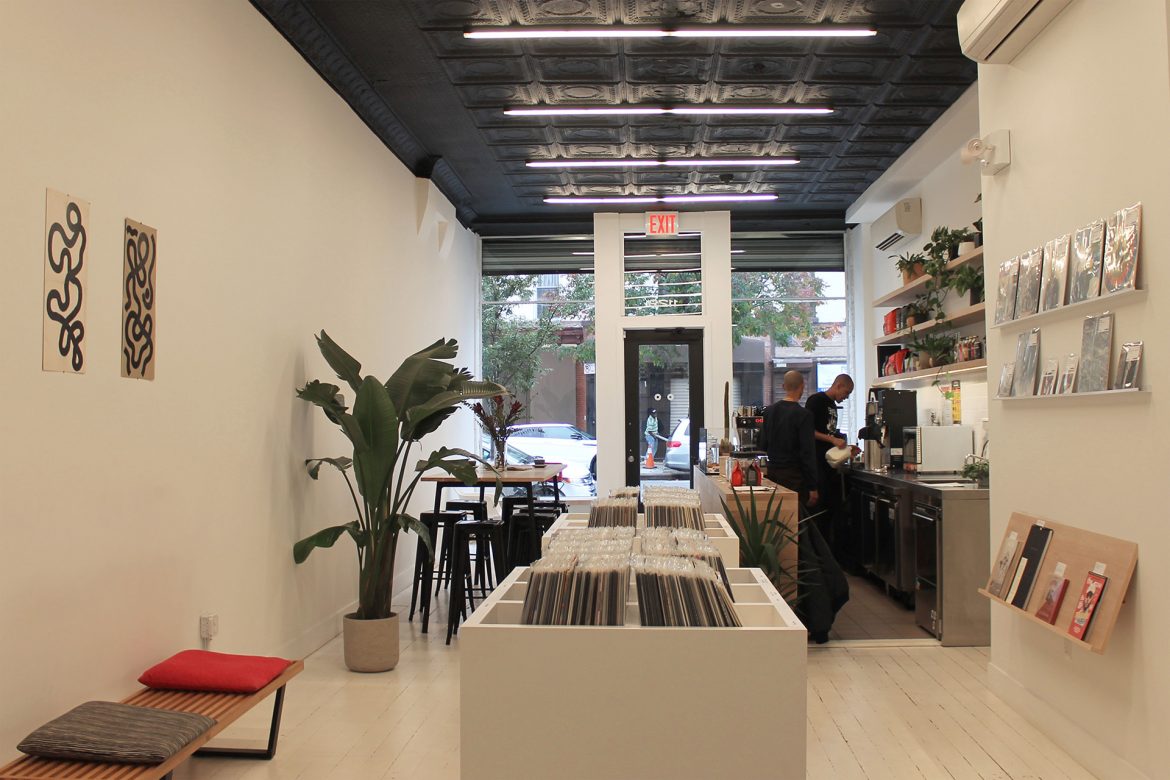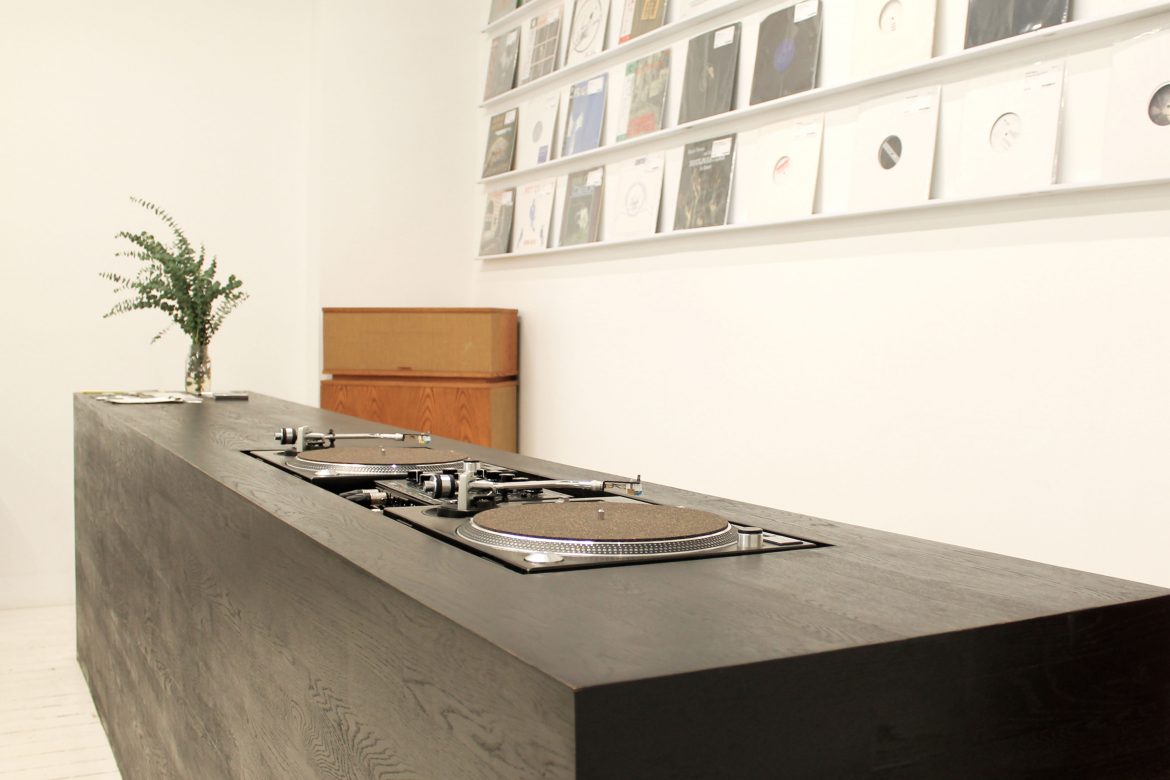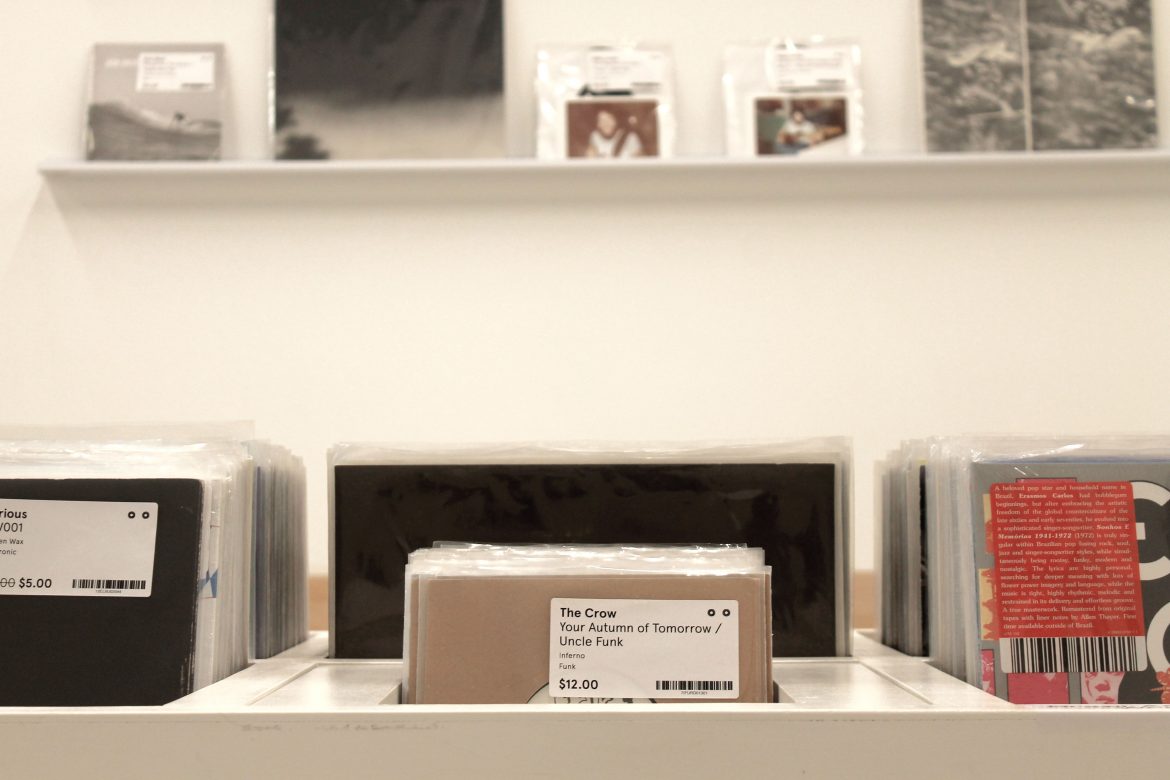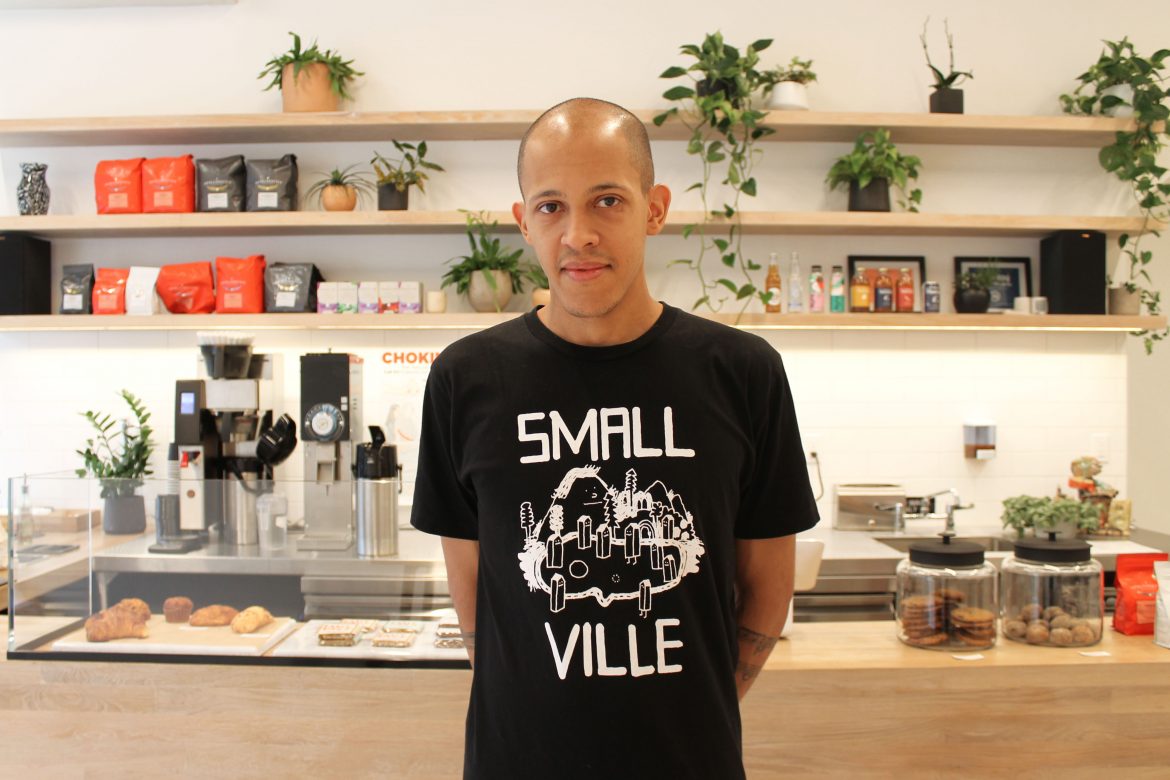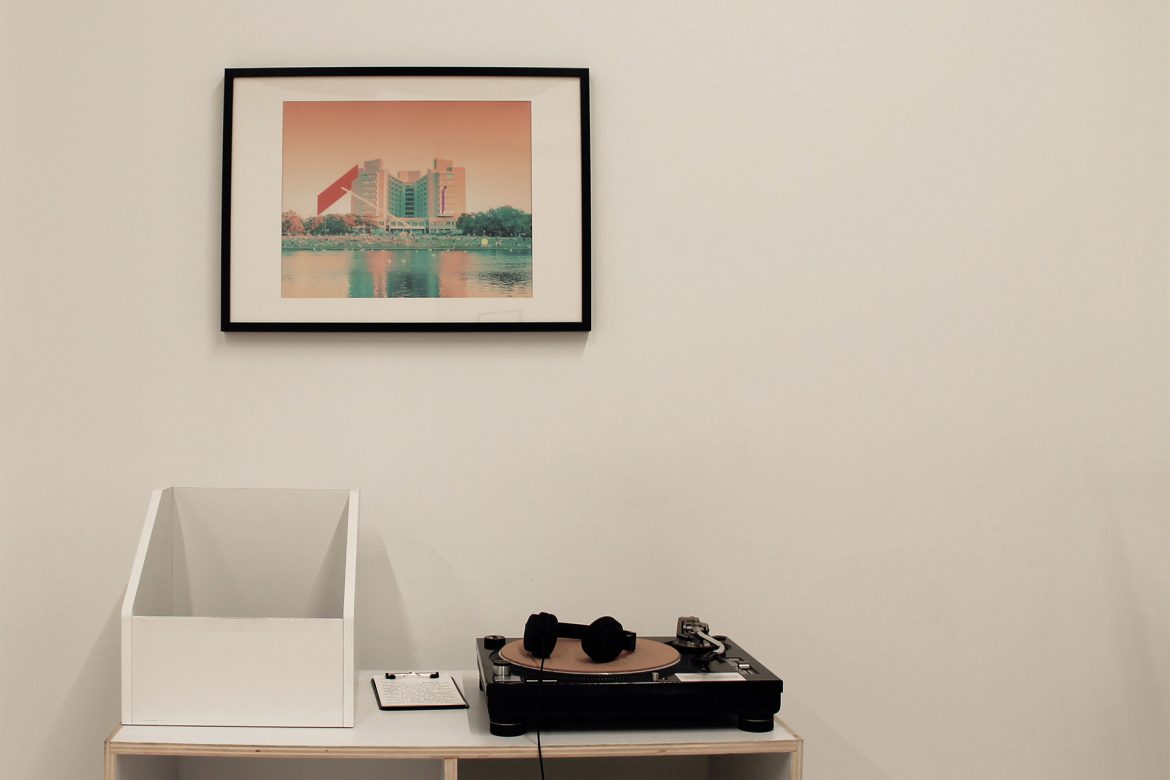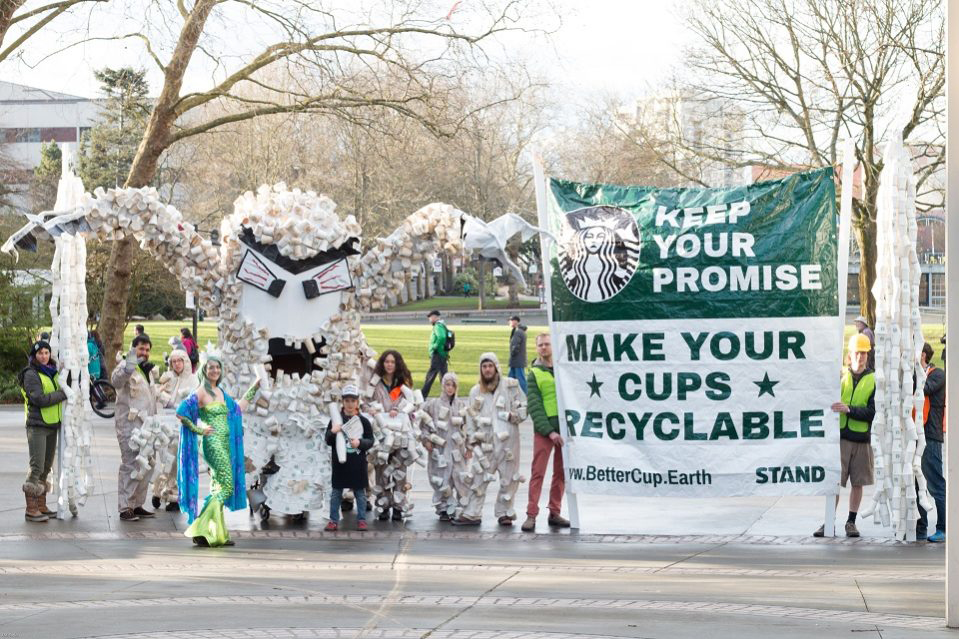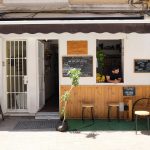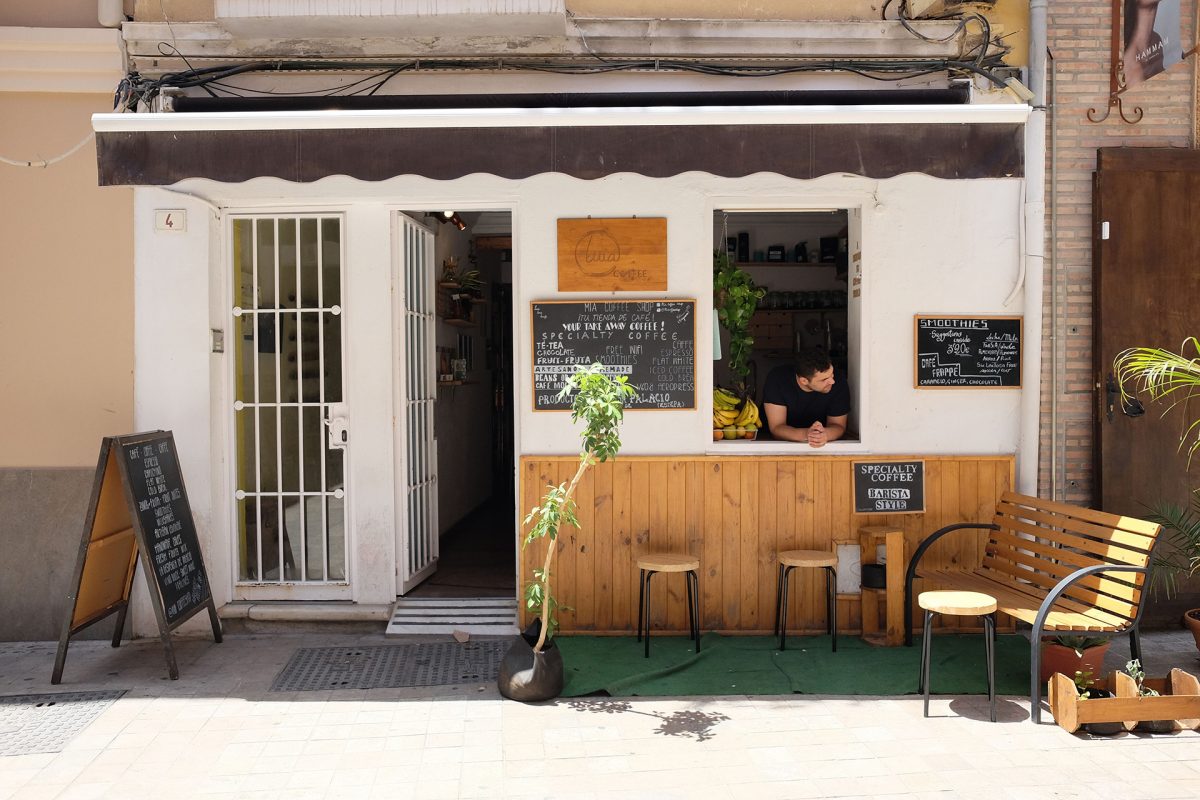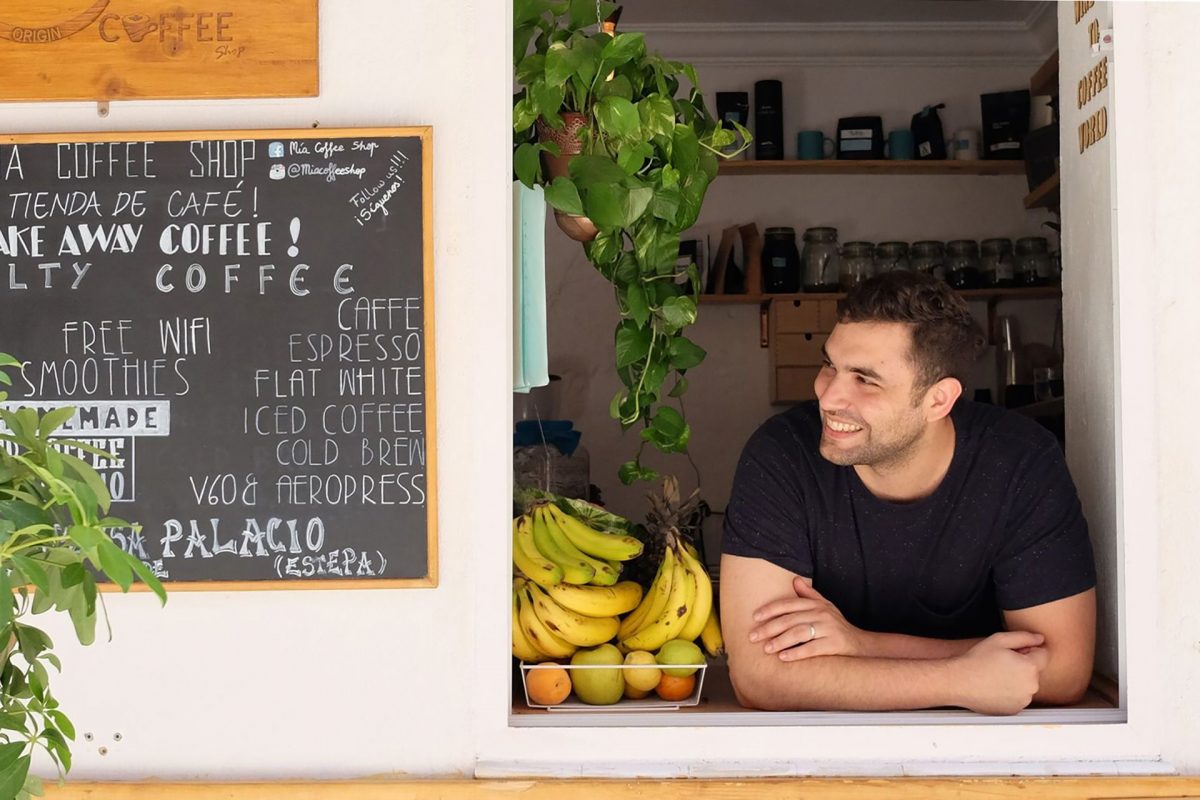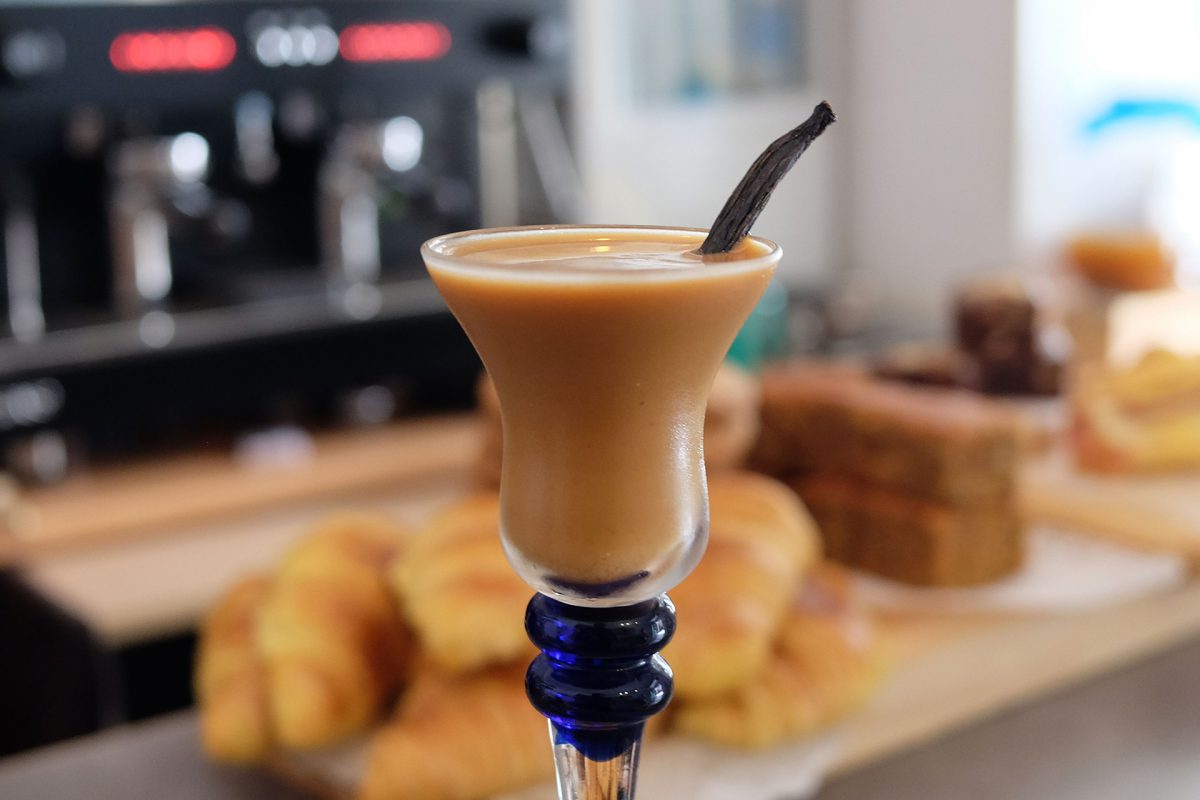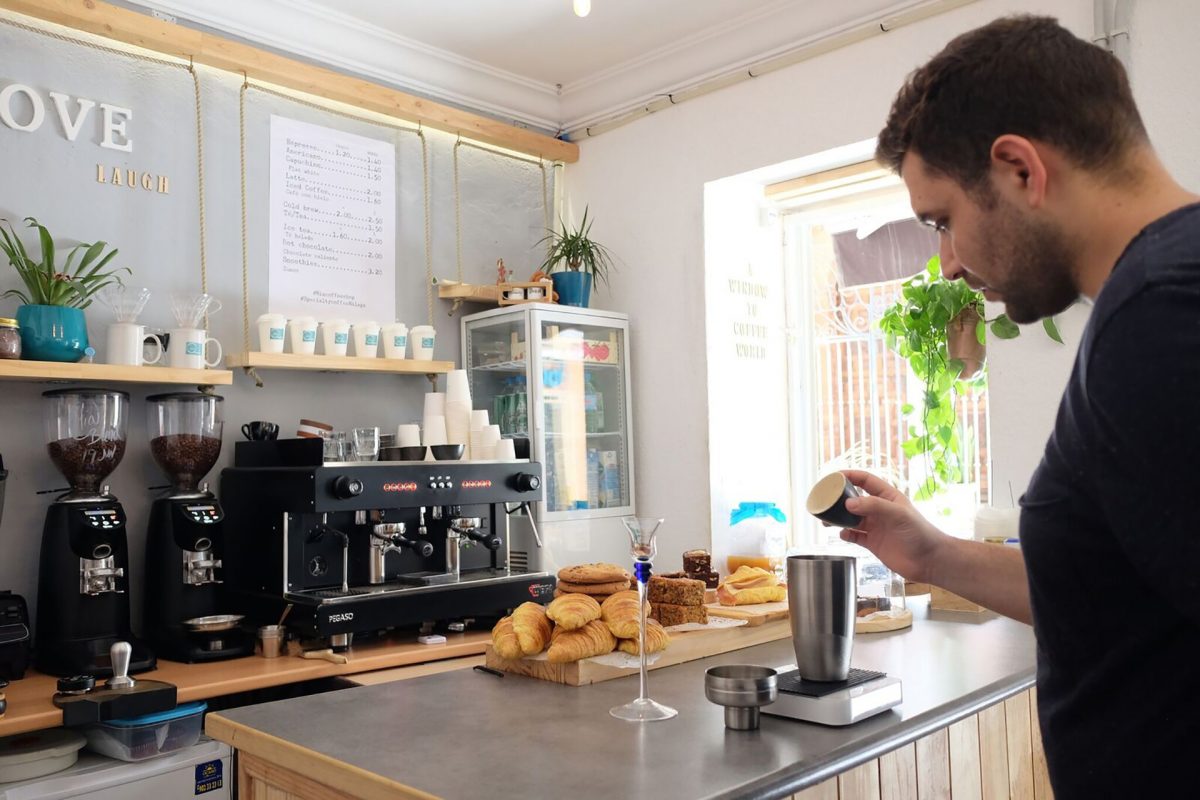Guatemala es conocida por su café Arábica de proceso lavado, sin embargo los cafés honeys y naturales están despegando lentamente en este país centroamericano. De hecho, en 2016, cinco de los ganadores de la Taza de la Excelencia fueron honeys y naturales.
Hablé con Roberto Soto, Ingeniero agrónomo en la Asociación Nacional del Café de Guatemala, Anacafé, y con varios productores del país para averiguar más sobre esta tendencia.
English Version:How Naturals & Honeys Are Changing The Face of Guatemalan Coffees
 Honeys y naturales en camas elevadas. Crédito: Amec Velazquez
Honeys y naturales en camas elevadas. Crédito: Amec Velazquez
Honeys & Naturales: Lo Esencial
El procesamiento húmedo o lavado tiene una larga y respetada historia en el café de especialidad. Durante este proceso, primero se remueve completamente la cereza antes de poner a secar el café; esto es algo que reduce el riesgo de una fermentación sin control. A su vez, este crea un sabor limpio y consistente que permite realmente sobresalir las características del café. Y hasta hace poco, esto era la norma en Guatemala: de acuerdo con el Green Book de Anacafé, el 98% del café del país es Arábica de proceso lavado.
Pero, recientemente los honeys se han estado ganando los corazones de los consumidores, mientras que los naturales están dejando su nombre en alto en la industria de especialidad. Los cafés naturales, también llamados “cafés procesados en seco”, se secan con la cereza aún adherida; los honeys, por otra parte, se secan con parte de la cereza aun en el grano. En ambos casos, se espera un perfil dulce, a fruta, con un mejor cuerpo.
Sin embargo, estos pueden venir con más riesgos y tener perfiles de sabor más inconsistentes, por lo que los productores deben monitorear y controlar las condiciones de secado, y asegurar un lote de alta calidad.
VER TAMBIÉN: Proceso 101: Lavado, Natural Y Honey Producción de Café
 El proceso natural empieza cuando se ponen a secar las cerezas maduras en camas elevadas. Crédito: Angie Molina
El proceso natural empieza cuando se ponen a secar las cerezas maduras en camas elevadas. Crédito: Angie Molina
Los Beneficios para los Productores & Tostadores
No es que los honeys y naturales vayan a reemplazar a los cafés lavados, pero pueden ser una forma genial de diversificar las ofertas del productor y el tostador, y atraer otras áreas del mercado.
Roberto dijo, “Hay 360 microclimas en Guatemala, más las diferentes variedades, más las altitudes. Agregar nuevos métodos de procesamientos multiplica esto, creando más oportunidades en el mercado, con las mismas variedades presentadas en diferentes formas”.
Además, ciertos cafés pueden ajustarse a diferentes métodos de procesamiento. Roberto me recordó que más del 85% de los cafés del país son granos estrictamente duros, un indicador de una calidad mayor y sabores complejos. Estos cafés en general se ajustan bien cuando tienen un proceso lavado y pueden dar una experiencia sensorial excepcional cuando pasan por proceso honey o natural.
Sin embargo, esos cafés más suaves que crecen en Guatemala bajo los 1,200 m.s.n.m, generalmente obtienen precios más bajos. Un proceso natural o honey puede agregar dulzura, cuerpo y sabores distintivos que permitirá al café llamar la atención de los consumidores.
Además, mientras que los honeys y naturales llevan un poco más de trabajo, generalmente requieren menos infraestructura, lo que ayuda a ahorrar dinero a los productores.
VER TAMBIÉN: Por qué Los Naturales de Especialidad Requieren de un Estricto Control de Calidad
Con honeys y naturales ganando la Taza de Excelencia, sin duda alguna, estos procesos pueden producir cafés de calidad, y la demanda del mercado también lo refleja.
 Cafés naturales secándose en camas elevadas mientras que un productor revisa el progreso de un lote de proceso húmedo. Crédito: Angie Molina
Cafés naturales secándose en camas elevadas mientras que un productor revisa el progreso de un lote de proceso húmedo. Crédito: Angie Molina
¿Es el Clima de Guatemala Adecuado para Honeys y Naturales?
El clima seco es importante a la hora de procesar honeys y naturales. Si es demasiado húmedo, puede generar un secado inconsistente o cafés mohosos, una situación que sale cara para el productor.
Roberto me dijo que algunas regiones son mejores para los honeys y naturales que otras. Por ejemplo, el centro y sudeste de Guatemala por lo general son secos.
Sin embargo, en otras regiones puede ser más difícil porque hay un mayor riesgo de lluvias durante la cosecha. Aun así, es posible con un invernadero o secador solar. Roberto me contó sobre Alejandro Morales, un productor en Huehuetenango, que produce honeys y naturales de forma exitosa y capacita a otros en cómo hacerlo a pesar del clima frío; ya que este retrasa el secado y pone en riesgo los naturales y honeys.
Similarmente, José Alfredo Gómez de La Bendición Coffee Farm, produce honeys y naturales en Palencia, al oriente de Guatemala. Me comentó José que mueve sus cafés hacia adentro y afuera cada vez que la temperatura cambia, por tal razón está pensando en invertir en un invernadero para construir camas elevadas.
VER TAMBIÉN: Una Guía de los Cafés de Guatemala
Siempre es riesgoso cuando se cambian métodos de procesamiento. Es importante considerar tanto el clima como los recursos disponibles para decidir si hacer o no procesos naturales o honeys. Sin embargo, al ser cuidadoso como productor, es posible hacer ambas cosas en Guatemala.
 Honeys y naturales secándose bajo el sol. Crédito: Angie Molina
Honeys y naturales secándose bajo el sol. Crédito: Angie Molina
Consejos de Procesamiento para Productores Guatemaltecos
Le pedí a Roberto consejos para productores guatemaltecos curiosos sobre el procesamiento natural y honey; me dijo que Anacafé ha creado una guía llamada Guía de Buenas Prácticas para el Café Semi-Lavado y Natural, que lo divide en cuatro pasos:
1. Identificar el café con el que vas a hacer un proceso natural/honey e identificar sus atributos sensoriales. Roberto me explicó que, si lo productores conocen la calidad de ciertos cafés y variedades cuando hacen el proceso de lavado, pueden identificar los mejores cafés para proceso honey o natural.
2. Seguir las mejores prácticas de cosecha. Las cerezas de café deben estar libres de plagas y enfermedades, idealmente deben tener un nivel Brix de 18% a 24%, y las cerezas poco maduras o demasiado maduras deben eliminarse del lote. Además, si se procesa honey, Roberto recomienda dejar las cerezas durante 24 horas antes de despulpar (siempre que el clima sea adecuado).
3. Clasificar el café por densidad o tamaño. Esto tradicionalmente se haría con agua, pero Roberto explicó que esto podría eliminar parte del mucílago adherido a los granos. La cantidad de mucílago definirá la intensidad de las cualidades afrutadas del café y también puede afectar el método de secado.
4. Secado. Para obtener mejores resultados, seca los cafés lentamente. Usa camas elevadas para asegurar el flujo de aire; esto creará un secado uniforme. Por la misma razón, los productores también deben usar capas delgadas de cerezas y moverlas regularmente (cada dos o tres horas durante los primeros días).
VER TAMBIÉN: Cómo Secar Café Natural en Camas Elevadas
Aun así, siguiendo las mejores prácticas, los honey y naturales pueden ser algo engañosos. Roberto recomienda a los productores hacer uso de cualquier asistencia técnica disponible. Además, los productores deberían comenzar con lotes pequeños y experimentales para reducir el riesgo. Las primeras veces, sugirió, que no se centren en la calidad del perfil del café sino en su limpieza: dominar esto será crucial a largo plazo.
 Cafés honey secándose bajo el sol. Crédito: Angie Molina
Cafés honey secándose bajo el sol. Crédito: Angie Molina
Es importante que los productores sigan las mejores prácticas y actúen con cautela cuando experimenten con nuevos métodos de procesamiento. Y, por supuesto, los cafés de proceso húmedo siempre serán populares. Sin embargo, para aquellos que pueden invertir tiempo y mano de obra al procesamiento, y tienen el clima o la infraestructura adecuadas, los cafés honeys y naturales son una gran oportunidad.
Escrito por Angie Molina.
Traducido por Alejandra M Hernández y editado por Karla Boza.
Por favor, ten en cuenta: este artículo fue patrocinado por Anacafé.
Perfect Daily Grind
¿Quieres Seguir Leyendo Artículos Como Este? ¡Suscríbete Aquí!
from RSSMix.com Mix ID 8200593 https://www.perfectdailygrind.com/2017/11/como-los-cafes-naturales-y-honey-estan-cambiando-la-imagen-del-cafe-guatemalteco/





